A single-day Tour down in the Brecks and Thetford Forest today. The weather forecasters couldn’t decide in the last few days whether the overnight rain would linger. Unfortunately it did! Thankfully we could keep track of its progress on rainfall radar and could see that it should clear through by around 12pm, which it also did on cue. It brightened up in the afternoon and we made the most of the dry weather, seeing all the birds we had hoped to see and more.
We met in the car park at Lynford Arboretum. Given the rain, we figured we would concentrate on the birds here first this morning, which we could probably still see more easily in the rain, and concentrate on some of the other species which required better weather in the afternoon.
We walked into the Arboretum and down to the gate. All the birds had been spooked from the ground when we arrived, so we stopped to wait for them to come back down. We hadn’t been there more than a minute when a Hawfinch flew in and landed high in the trees above our heads. We looked up and could see that it was a female, but we were looking straight into the rain. It was chased by a Chaffinch, and both flew out towards the orchard, so we walked up to see if we could find them in the trees there. The birds normally like to perch here in the early morning sunshine but it was not the weather for them today!
We looked up to see a flock of birds flying in, more Hawfinches, around fifteen of them! They started to land in the top of one of the trees, but flew out again and disappeared off into the arboretum. We walked across to the folly and scanned the tops of trees there but there was no sign of them, so we figured they had gone on down to the paddocks. As we walked down the main path a couple of Song Thrushes were singing, one perched right up against the sky in the trees by the path.
Down at the bridge, there were lots of tits coming in to the feeders including a Marsh Tit which darted in to the bushes briefly. We could see Hawfinches in the first hornbeam in the paddocks beyond, so we walked on along the path to the gate and got the scope on them. Three were perched right in the top but flew across to the trees further along before we all got a look at them. Thankfully, there were still several lower down, so we turned the scope onto them. Despite the rain, we had a really good look at them now.
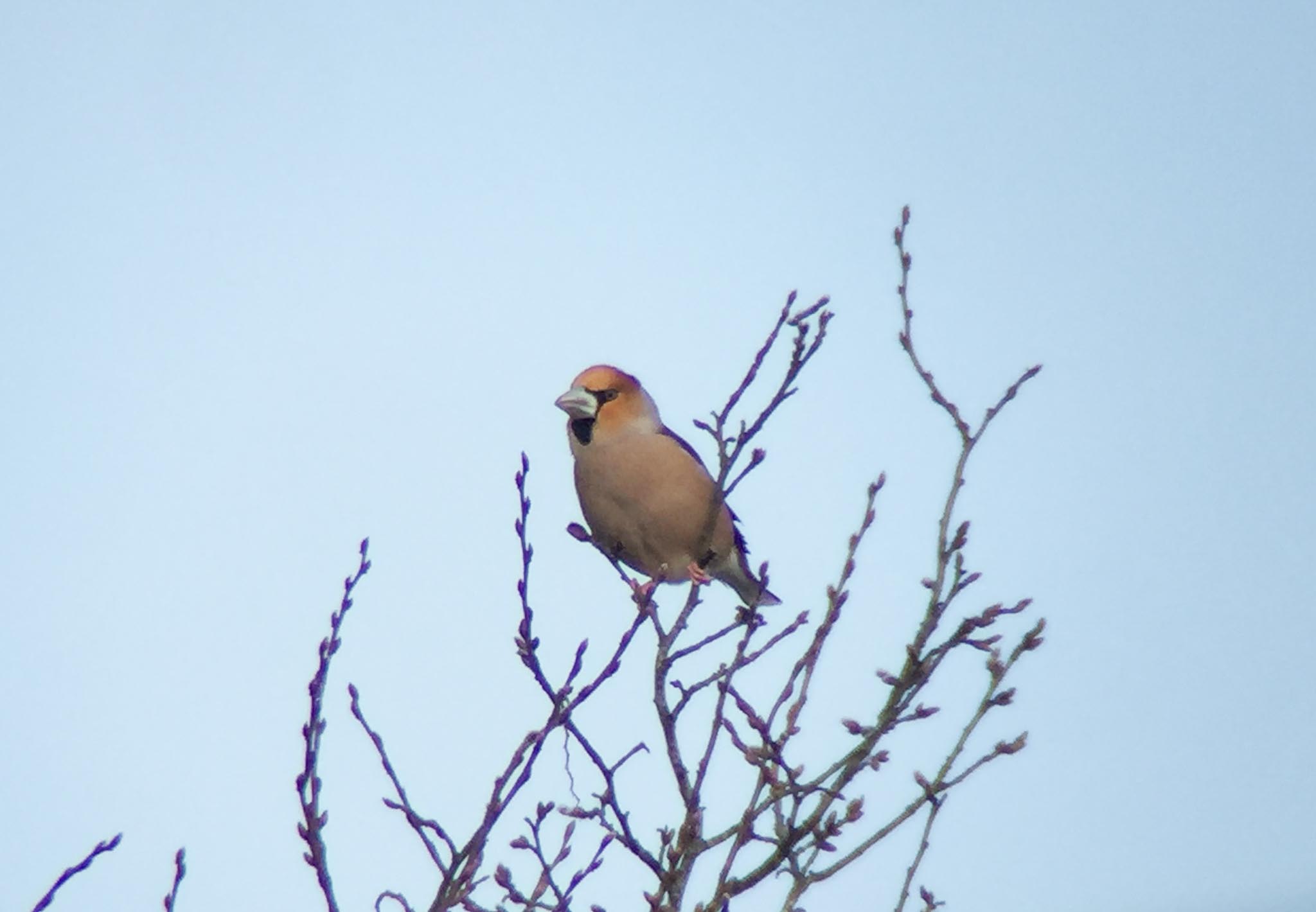
When those Hawfinches dropped down through the branches, we walked on to the next gap in the hedge to see if there were any perched up in the other trees. We couldn’t see any from here but there were several Redwings in the top of the ashes now. A Great Spotted Woodpecker flew in and landed on the dead trunk at the top of one of the trees.
Looking back to the first hornbeam, we could see the Hawfinches feeding on the ground below the tree now. The highland cattle have not been grazing in the paddocks this winter so the grass is a little longer, but still we had a good look at them on the ground. When they flew back up into the tree above, we counted at least seven perched in the branches. We could see their distinctive vertical perching stance, all head and massive bill and short tail.
We continued on along to the far corner of the paddock, flushing lots of tits which were feeding down in the short grass by the path at the end. A Treecreeper flew across over our heads and landed low in a nearby tree, where we watched it climbing up the trunk. We decided to walk back round the far side to have a look at the lake. There were still several Redwings in the trees in the paddocks and others flying across and up into the fir trees along the west side.
There were three or four Siskins in the alders as we started to walk round the lake, with one coming down onto the ground just ahead of us to feed. The resident pair of Canada Geese swam over to see if we had any food for them and a couple of Gadwall were out on the water with the Mallard. Further along, we turned the scope on the ground under the first hornbeam again where we could see the Hawfinches were still feeding along with several Chaffinches. We were a bit closer from here and it was a good view of them alongside their much smaller cousins.
The Little Grebes were laughing at us from the reeds behind – we were just about the only people mad enough to be out this morning! We hadn’t seen any sign of the large flock of Siskins as we walked round the lake but a succession small groups flew in now and landed in the alders the other side of the lake. We could hear them chattering away. Another Great Spotted Woodpecker flew up from the feeders into the trees behind as we got back to the bridge. We could hear a Nuthatch piping but it didn’t come in.
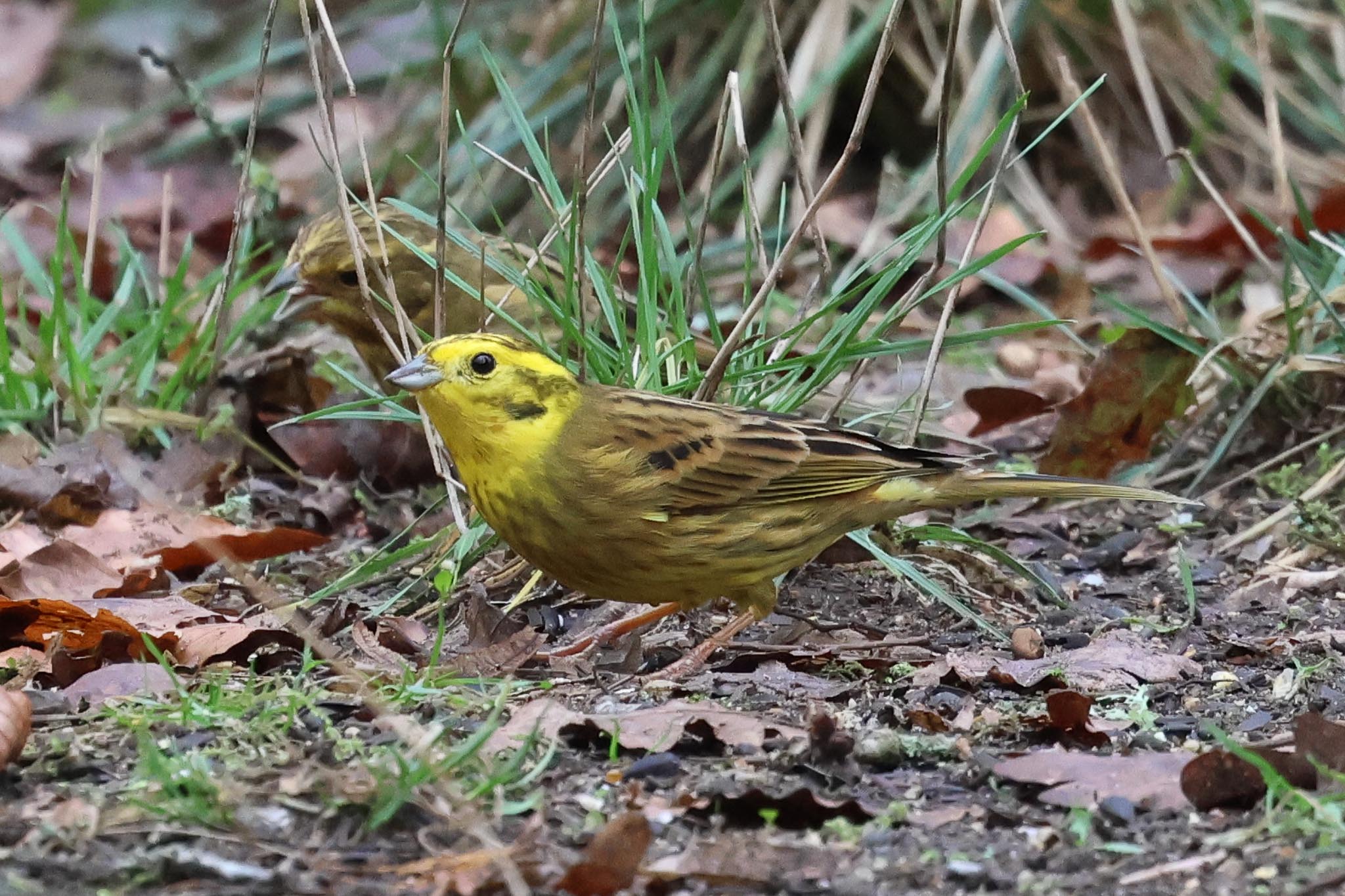
We walked back up to the gate, and there were lots of birds feeding on the ground now so we stopped to watch. Several Yellowhammers dropped down, including a particularly bright yellow-headed male, and a selection of Bramblings. A Nuthatch dropped down onto the ground too, and a couple of Coal Tits. There was no sign of any Hawfinches coming down to feed here today, though we could not tell whether they might have been hidden behind the green plastic sheet which has been strung across between the gate and the hide. They seem to have been coming down less often since the sheet has been put up, so hopefully it is not putting them off coming in to feed here now.
It was still raining and we had all got quite damp on our walk round. Two of the group, who didn’t have waterproofs, decided they would call it a day and the rest of us decamped to the Shepherd’s Baa for a hot drink under the shelter. We checked the rainfall radar again and it still looked as though the rain was on track to clear through by midday. It was already mid morning, so we thought we would head round to Santon Downham next and then be ready to go looking for Goshawks once the weather improved.
We stopped on the way to look for Woodlarks. The most we were hoping for at this stage was to find some feeding on the ground and the first place we tried was very wet and birdless. As we walked into the next clearing, two Woodlarks flew up from the grass ahead of us but disappeared off over the trees. We thought we might have to settle for that, but then a third Woodlark fluttered up and started singing. We watched it circling round over the clearing, rounded wings and short tail a bit like a butterfly. Either one of the first two or perhaps even a fourth individual appeared over the clearing further down and started singing too. It was great to just stand and listen to them – although sounding slightly melancholy, the song of Woodlarks over the forest clearings early in the year is a wonderful sound and a real herald that spring is on its way.
The closer Woodlark dropped down onto the ground. We scanned the grass and had just found it in a small dip when it flew up again. The rain was just starting to ease and there was even a hint of the sun behind the clouds as it towered up high over our heads. We had a look further down the path, but there was no sign of the other Woodlarks on the ground here, so we decided to move on.
We parked in the Forestry Commission car park at Santon Downham and as we got out of the minibus, a Sparrowhawk flew over – a good sign that the weather was improving. As we walked back down to the bridge, there weren’t so many birds in the gardens now and most of the Siskins were up in the tops of the trees. Someone was just filling up the feeders down by the river. There had been some Crossbills down along the river bank in recent days, although only the first section of the path is passable at the moment and the river has flooded over the bank further down, and two other birders we passed also told us they had seen some redpolls along here so we thought it was a good place to try.
It was rather damp down by the river, both underfoot and with the water still dripping off the trees. Three Mute Swans were enjoying all the water and a pair of Egyptian Geese flew past over the other side of the river, calling noisily. There were a few Siskins in the sallows but no sign of any crossbills or redpolls now. A Marsh Tit showed nicely in the branches over the path ahead of us. When we got to the end of the raised section of the path, we turned to come back. A lone drake Mandarin zipped past us through the trees.
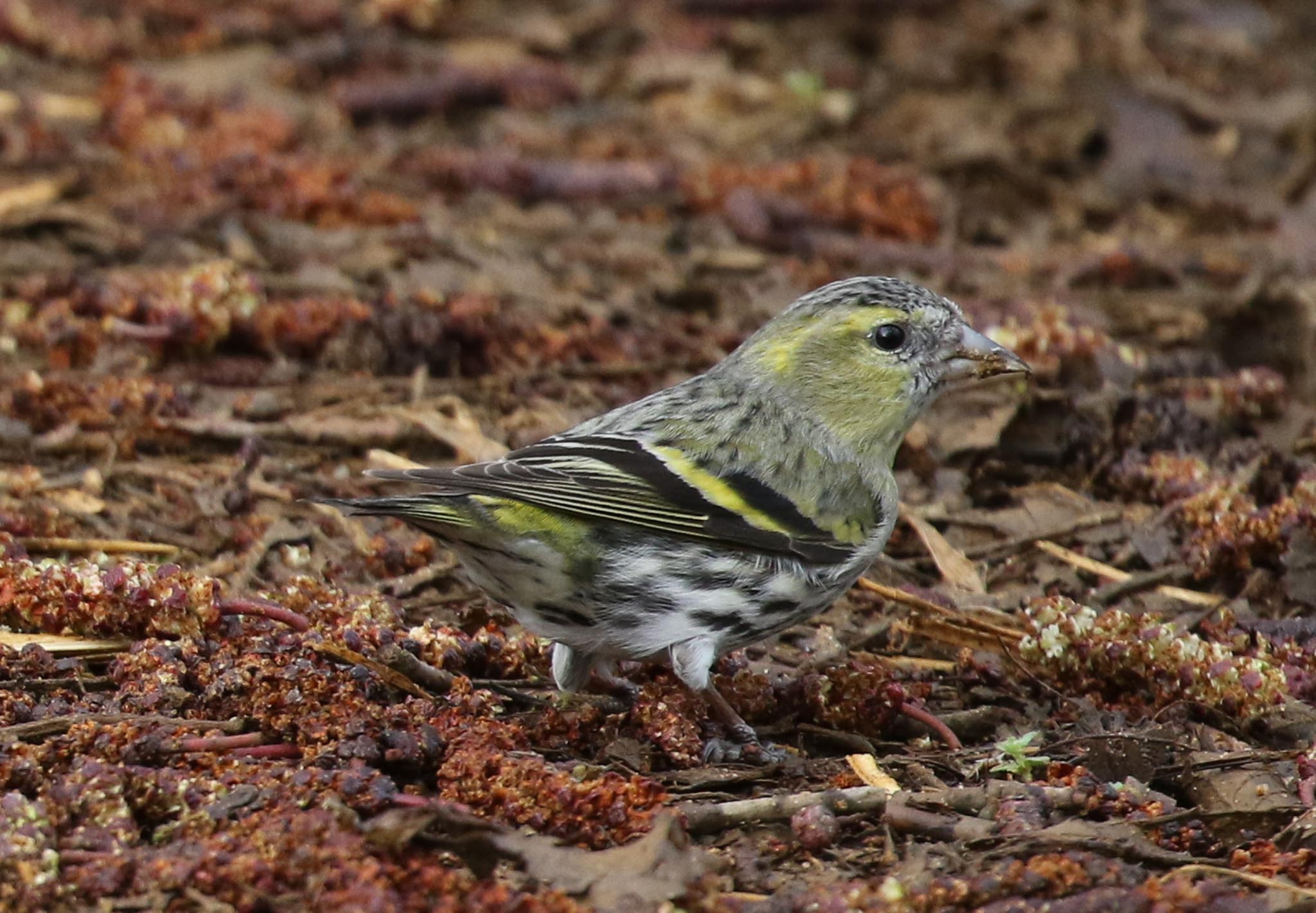
Back towards the bridge, three Lesser Redpolls dropped in to a small willow on the other bank, including a smart red-breasted male. Another dropped down onto the feeder briefly, but had gone by the time we got the scope on it and had to make do with a very smart green and gold male Siskin instead. As we walked back over the bridge, several birds were perched in the trees above the gardens now. We got the scope on three Redpolls and noticed that one which was back on to us, preening, had a distinctive dark-streaked pale rump – a Mealy Redpoll! It dropped down towards the garden but there was no sign of it on the feeders when we walked up and just a succession of more Lesser Redpolls dropped in. As we walked on back to the car park, a Goldcrest was singing and flitting around in a fir tree next to the road.
The forecast was still suggesting the sun might break through around 2pm, so although it was still rather grey now, we decided to head off to try our luck with Goshawks while we ate lunch. As we drove past, several flocks of Fieldfares came up out of the fields. When we got to the usual spot on the high ground looking over the forest the wind had picked up a bit and there were some patches of bright sky, which looked more promising. Several Common Buzzards were already up above the trees along with a single Red Kite, and we hadn’t been scanning more than a couple of minutes before we picked up a very distant Goshawk displaying away to the NW.
We barely had a chance to enjoy our sandwiches today, as it was all action from now on. A big adult female Goshawk flew low along the front edge of the trees in front of us before circling up and starting to display, flying back the other way with very deep, exaggerated wingbeats. Silvery grey above and white below, at times when it stopped to circle we had some good views through the scope.

Then a browner juvenile Goshawk with orange-tinged streaked underparts appeared from the right and started displaying too. As it flew in towards where the adult female was still displaying, she headed straight towards it and the juvenile appeared to back off, moving back off to the right while the female then turned back to left and resumed what she had been doing. The juvenile hadn’t learnt its lesson though and after a minute or so flew back in towards the adult. This time the female set off in pursuit, chasing off after the juvenile and pursuing it off away over the trees.
Having seen off the juvenile, the adult female Goshawk flew back in low and dropped down into the trees. We could still see the juvenile displaying in the distance away to the NE and now it brought up another adult from the next territory over, which started displaying too. At least four different Goshawks up and displaying in the space of 45 minutes while we were trying to eat our lunch! A Woodlark flew over singing too and a pair of Stonechats were on the fence by the road next to where we were parked.
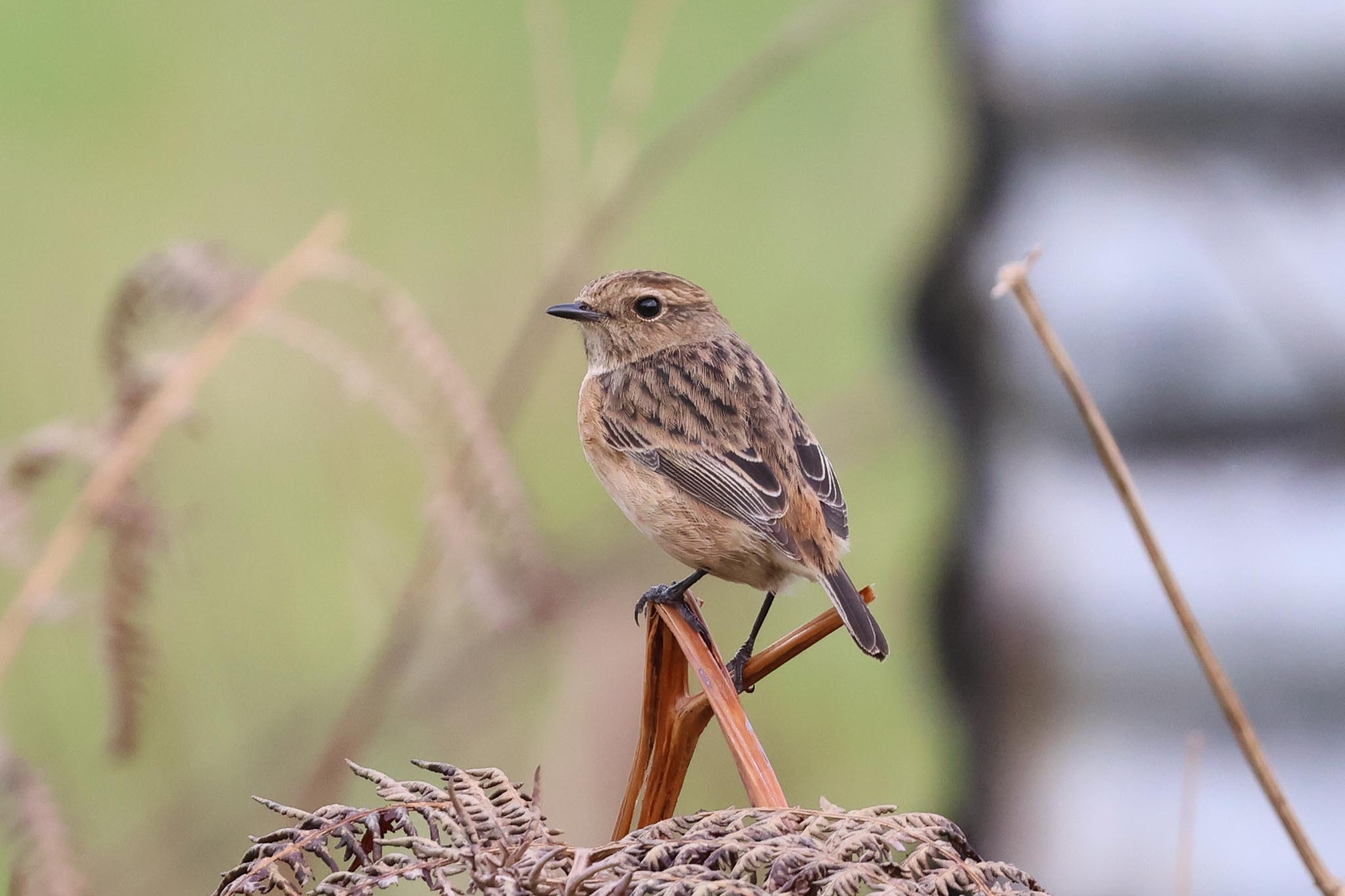
Once we had finished eating, we decided to move on. We stopped again by a small field planted with a wild bird seed mix and as we pulled up we could see lots of Yellowhammers and Reed Buntings in the bushes across the road. From the edge of the field, we looked up along the hedge and quickly found one or two Tree Sparrows in the brambles which we got in the scope. A couple more appeared briefly on the bushes further up, but they were mostly keeping to the vegetation today.

We would normally head back to Lynford around the time, to be sure of catching the Hawfinches, but after having seen them this morning, albeit in the rain, we decided to try something else. We headed back to the area we had seen the Common Crossbill perched last week and this time walked in along a different ride, straight along the line of firs where we thought it had probably been. We hadn’t gone very far in when we heard Crossbills calling and looked up to see a small flock fly out of the tops of the firs and across the ride above us. They disappeared over the pines the other side but thankfully flew back over and landed in the tops of the firs.

We got the scope on the Crossbills now, perched very obligingly in the top of a tree. There were several bright red males higher up and a few greener females lower down, and through the scope we could see their distinctive crossed mandible tips which they use for prying open fir cones. They weren’t feeding now though, or certainly the ones perched in the top were not. We couldn’t see all the flock though, and when they eventually took off again we counted thirteen in the group. They disappeared back into the block of firs from where they had first come and we could see them perched in the top of one tree further in briefly before they dropped down out of view.
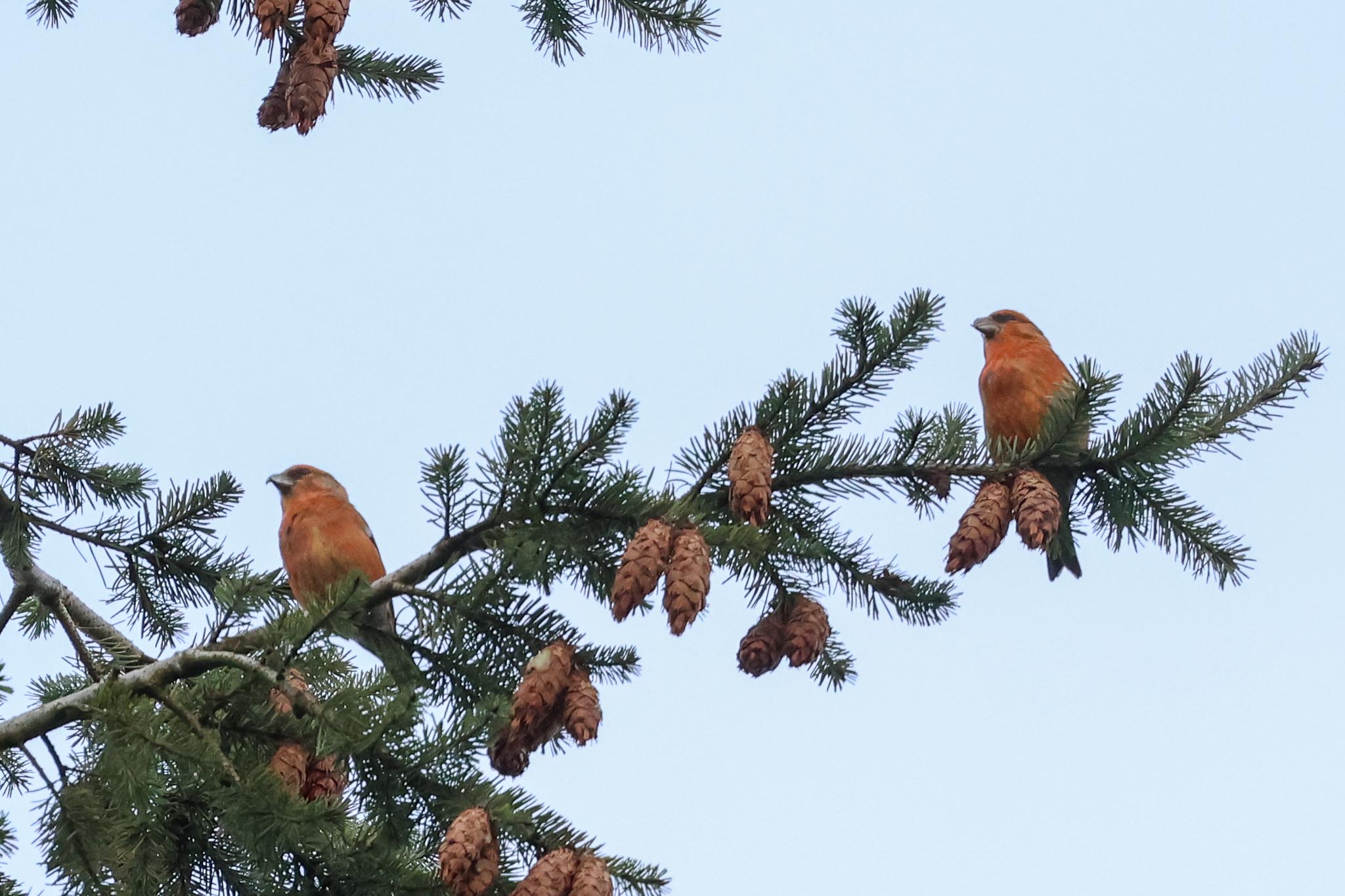
Now we did make our way back to Lynford. Not surprisingly, there were a lot more cars in the car park than there had been this morning, now that the weather had improved. We walked in to the Arboretum and down to the gate. It was nicer standing here now that it was not raining and we spent a bit more time admiring the Bramblings, noting the variation in the males, some with much blacker heads already than others.

There were even more Yellowhammers coming down now, with at least ten on the ground together at one point. A Treecreeper appeared in one the dead trees very close to where we were standing.
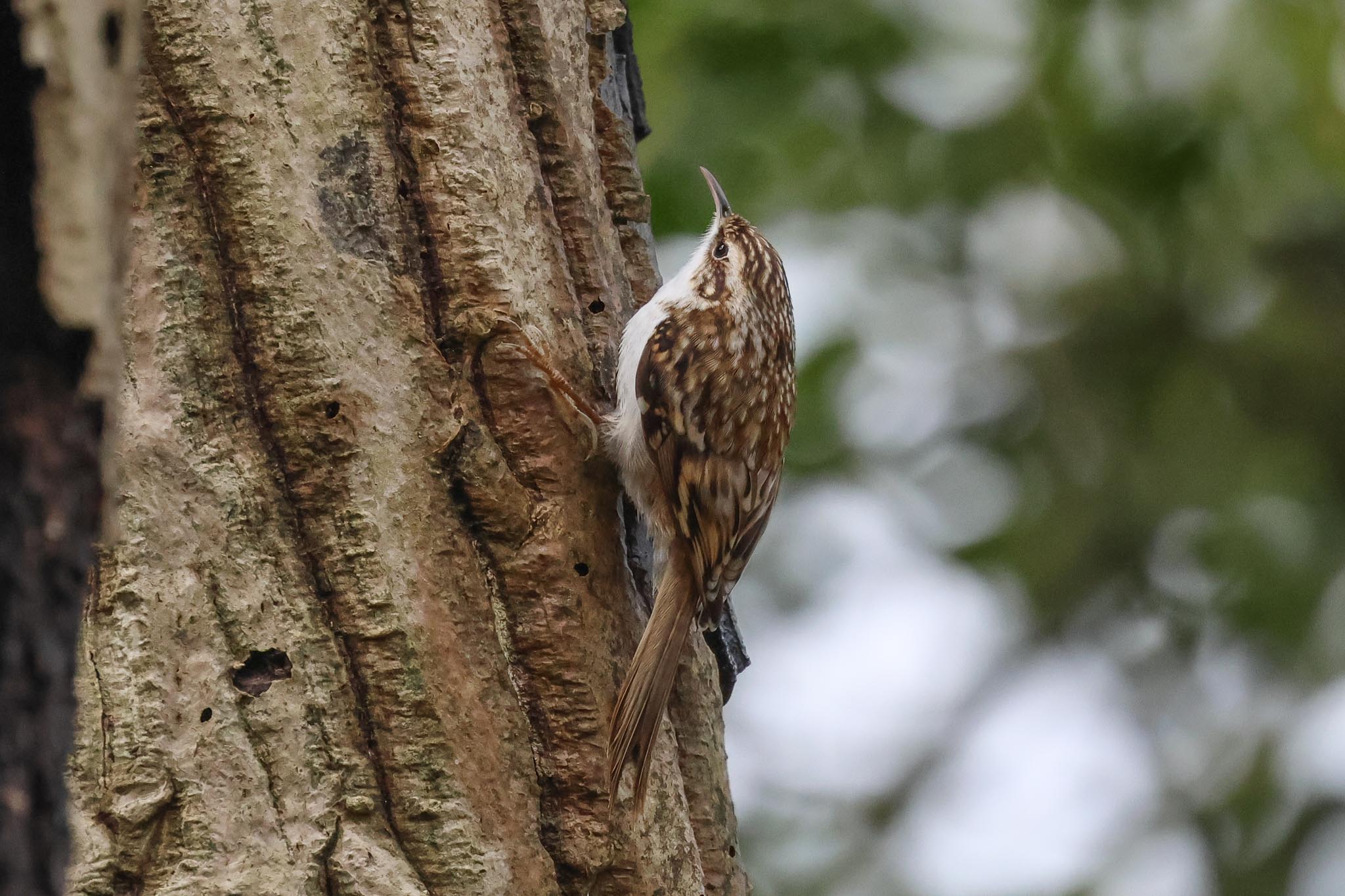
There was still no sign of any Hawfinches up at the gate, so we walked back down to the paddocks to see if they were there. They had apparently been in the hornbeams still earlier in the afternoon, but we were probably just too late and there was no sign of them when we arrived. They do have a habit of going off to roost early, so we were not entirely surprised. We checked the tops of the fir trees at the back, but there was no sign of them there either. There were a few Chaffinches and a couple of Bramblings in the hornbeams, and a couple of Mistle Thrushes flew in and landed in the top of one of the trees, a nice last addition to the day’s list.
Then it was time to call it a day and head back to the car park. It may have been a very wet start today, but despite that we had enjoyed a very successful day down in the Brecks and seen all the birds we had set out to find and more.
















